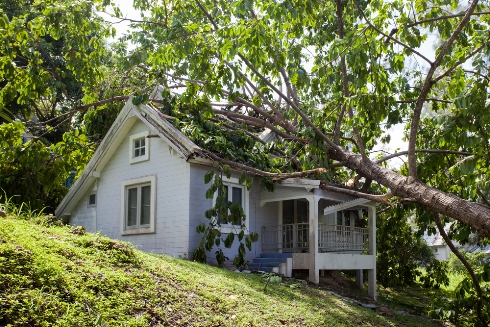Everybody likes trees. They add beauty to a property. They provide shade on hot summer days. Unfortunately, they also pose a serious threat when they fall. If you own property, whether it’s a business or a home, you need to ensure that any trees are properly monitored and cared for in order to minimize the risk of property damage – or worse.
What is the risk?
Trees seem harmless until they or their branches fall. Then, they become the source of costly repairs, contentious disputes between neighbors and lawsuits.
When trees fall, extreme property damage can ensue. Roofs cave in. Houses are destroyed. Cars are totaled. According to the National Storm Damage Center, tree damage resulting from severe weather causes more than $1 billion dollars in property damage each year in the United States.
Even worse, falling trees can prove fatal for the people unlucky enough to find themselves in the way.
On December 11, 2014, an Oregon boy died after a tree fell on the car he was in. Oregon Live reports that the landowner has been sued for $2.5 million. The suit alleges that the large cedar tree showed obvious signs of decay and that the owners should have been aware of the threat and taken appropriate measures.
Unfortunately, this story is not unique. The Insurance Journal reports another Oregon death, this one caused when a tree crashed into a neighboring house. Again, the landowner is being sued. In Honolulu, the property manager of a condominium was sued after a falling branch killed a resident.
What can be done?
It’s smart to maintain insurance that protects you from claims associated with damage from falling trees. However, this is one danger that can sometimes be avoided entirely with a little caution. To keep your trees healthy, your property protected, and everyone safe, here are some things you should do.
- Provide a healthy environment for your trees. Better Homes and Gardens points out that humans are responsible for a lot of damage to trees, which suffer from activity related to cars and construction.
- Inspect large trees on your property for signs of damage and decay. You can hire an arborist to ensure that your trees are healthy.
- Trim trees to remove heavy or decayed branches. The entire tree doesn’t have to fall for disaster to strike. A single branch can wreak havoc on its own.
- Use a copper cable system to ground especially tall trees that may act as lightning rods during a storm, as described in this House Logic article.
- Remove dangerous trees. For most property owners, this is usually a last resort. Tree removal is expensive, after all, and owners generally want to keep their trees. Lawsuits are more expensive than removal, though, so if a tree poses a significant risk, take action before it’s too late. Hire a professional tree remover.
Relaxing in the shade of your beautiful trees will be much more enjoyable when you know you’ve done everything you can to prevent them from falling on you.

